世界五大宗教历史名城
BBC森夏恩·弗林特(Sunshine Flint)(2023年12月22日)
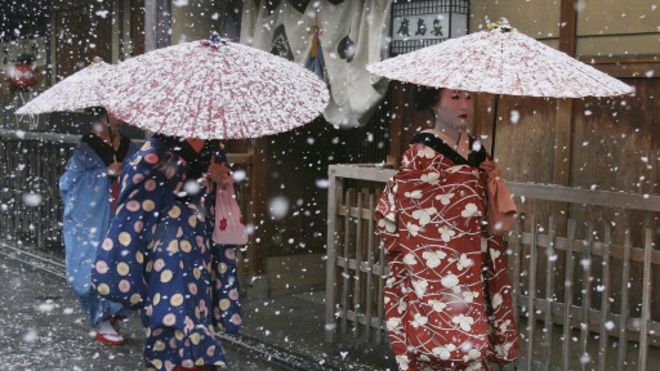
日本京都(图片来源:Getty Images)
从古至今,世界上有成千上万种宗教信仰。某些城市与其居民的宗教信仰有着密不可分的联系,充满着神圣的气息。这些城市以其宗教历史、礼拜场所和神圣空间闻名于世,其连结着教友,也吸引着世界各地的信徒和游客。
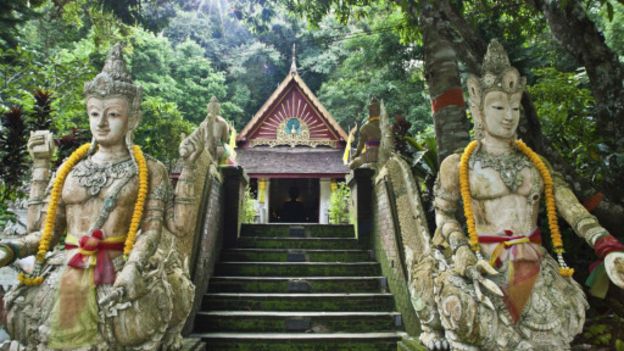
泰国清迈双龙寺(Wat Pha Lat)(图片来源:Sacha Bloor/Getty)
泰国清迈
泰国第二大城市清迈曾是独立的兰那王国首都,这个王国曾统治着泰国的北部。清迈有成百上千座佛寺,包括著名的契迪龙寺(Wat Chedi Luang)及其损毁的佛塔(或 chedi,顶部),在那里游客用绳子将一桶水提升到佛寺顶部再倒空,就可以得到佛陀的保佑。14 世纪时,素贴山(Doi Suthep mountain)顶上的双龙寺(Wat Phra That Doi Suthep)刚好就在城外,僧人们在此为信徒和好奇者祝福,而寺庙工作人员会劝告游客们向他们生日对应的佛像做适当敬献。但清迈并非一个与世隔绝之地:它是一个生机勃勃的大都市,到处是本地人、学生、外国人和退休者,湄滨河沿岸的市场、大街和餐厅之中到处是他们的身影。
城墙包裹着的内城是古清迈的核心地带,这里有众多酒吧、咖啡馆、寺庙和满是工艺品的周日市场;而新城则围绕着核心地带,那里有清迈大学等高等学府,也有众多住宅楼。在市郊,有些外国人住在称为“moo baan”的西式风格社区中。《清迈城市生活》杂志所有者兼出版人 Pim Kemasingki 表示:“我们这里居住的外国人大约有 40,000 人。”据该杂志最近的一项调查,近三分之一移居清迈的居民出于文化原因,还有 15% 是出于生活成本考虑。在内城或内城附近,一间工作室或共用工作间的月租金约为 5,500-8,000 泰铢。公寓的月租金约为 20,000-31,000 泰铢,新城区中有四个卧室带一个游泳池的豪宅的月租金则约为 56,000 泰铢。
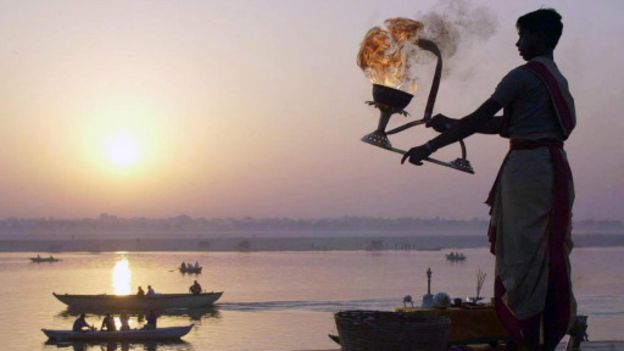
恒河岸边的晨祷(图片来源:AFP/Getty Images)
印度瓦拉纳西
位于恒河岸边的古代瓦拉纳西被印度教徒和耆那教教徒视为圣城,它也是印度的精神资本。瓦拉纳西又称为贝拿勒斯,历史约有 3,000 年之久,是世界上最古老的人类居住地之一。清晨,沿着重重石梯而下,就能进入圣河,其中满是沐浴者,他们通过将身体浸没在水中洗刷自己的罪恶。在两个神圣的葬礼石梯处,尸体被火化,死者即可从轮回中得到解脱,在周而复始的轮回被打破之时,其灵魂就将直上云霄。在这里,一年中始终都有许多节日要庆祝,例如,在 11 月的满月之时庆祝排灯节(Dev Diwali),彼时,石梯和恒河上将点亮成千上万个漂浮的蜡烛(“diya”)。
瓦拉纳西人口 140 万,每年还会涌入三百多万游客和朝圣者。城北附近的区域则比恒河边安静得多,绿地也更多,例如宿营地地区,英军曾在此驻扎和工作,现在则是国际酒店和医院的所在地。距离瓦拉纳西市不远是沙那(Sarnath),也就是鹿野苑,释迦牟尼曾在那里第一次布道,西藏研究中央大学(Central University for Tibetan Studies)就位于这里。史密斯等我的美国同事曾经在此留学,达赖喇嘛有时也会在此小住。这里市中心的三室公寓月租 17,500 卢比,城外同样大小的公寓则为 12,000 卢比。鹿野苑 90 平方米的公寓售价约为 250 万卢比。
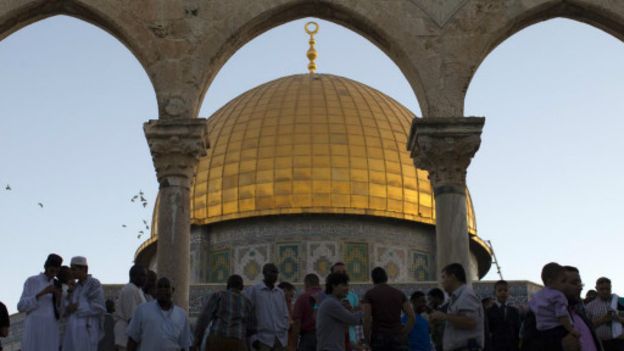
耶路撒冷圆顶清真寺(Dome of Rock)的晨祷(图片来源:AFP/Getty Images)
耶路撒冷
耶路撒冷同时是犹太教、基督教和伊斯兰教的伟大神论宗教圣地,耶路撒冷老城对三种宗教都有着令人难以置信的宗教意义。耶路撒冷的圣殿山(Temple Mount)有西墙(哭墙)(第二圣殿惟一幸存的部分)、阿克萨清真寺(the al-Aqsa Mosque)(伊斯兰教第三圣地)以及圆顶清真寺(Dome of the Rock)(穆斯林圣地,其中有基石——Foundation Stone),还有圣墓大教堂(Church of the Holy Sepulchre),后者耸立在耶稣基督被钉上十字架的地方。这个不足 1 平方公里的弹丸之地却有着世界上一些最神圣的地方。来自世界各地的虔诚信徒都会来此或祈祷或追随大卫王的脚步,或追溯耶稣基督受难的足迹。耶路撒冷老城位于现在的耶路撒冷内,后者被分割为西耶路撒冷和东耶路撒冷,西耶路撒冷大部分归以色列人,而东耶路撒冷大部分则属于巴勒斯坦人和阿拉伯人。东西耶路撒冷之间的生活和服务水准乃至目前分割东西耶路撒冷和约旦河西岸的隔离墙都迥然不同。
对于那些准备移居耶路撒冷的人,要做的一个最大决定就是到底选择东城还是选择西城。对于为非政府组织或慈善组织工作的一些外国人,其决定可能要取决于他们的工作性质和工作地点。在西耶路撒冷,德国侨民区是最受欢迎的居住区,在这里,沿着城中的高街——Emek Refaim 街分布着各色精品店、咖啡馆和餐厅。附近的巴卡(Baka)由于其传统阿拉伯房屋和建筑,也是理想的居住地。在东耶路撒冷,舒阿法特(Shuafat)区交通最为便利,包括三个车站,耶路撒冷轻轨在此直贯东西。德国城和巴卡等地的三居室公寓月租为 5,000 舍客勒,德国城的两居室公寓售价自 150 万舍客勒起。
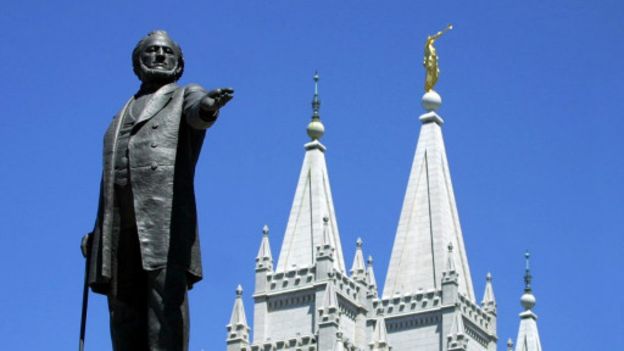
杨百翰(Brigham Young),耶稣基督后期圣徒教会(摩门教会)第二任总会会长AFP/Getty Images)
美国盐湖城
盐湖城是犹他州首府,也是世界上摩门教徒的精神家园,它由杨百翰(Brigham Young)及耶稣基督后期圣徒教会(摩门教会)其他领导人于 1847 年所创建。盐湖城 10 英亩大的圣殿广场(Temple Square)上耸立着很多尖顶教堂,这里也是著名的摩门圣幕合唱团(Mormon Tabernacle Choir)的大本营,而这里的美国家族历史图书馆 (Family History Library) 拥有世界上最丰富的宗谱资料收藏。
盐湖城约半数人口为摩门教徒,由于其传教士的传教活动和摩门教家庭出生率高,这里是世界上会员发展最快的教会之一。不过,盐湖城人口中也有其他宗教的信徒、男女同性恋者以及爱好野外活动的人士。盐湖城曾主办 2002 年冬季奥运会。盐湖城距离沃萨奇岭(Wasatch Range)仅数分钟之遥,那里有四个滑雪胜地,距离帕克城和鹿谷(Deer Valley)滑雪胜地也仅有半小时路程。盐湖城房地产协会媒体总监大卫·安德顿(David Anderton)表示:“人们之所以移居至此,是因为这里是摩门教总部,退休者移居至此,是因为他们想要接近教堂和家庭。这里的生活质量就更不用说了,盐湖城附近有五个国家公园和滑雪胜地。”
2012 年“城市溪流中心”购物中心景观(City Creek Center)的开幕促进了市中心地带的繁荣。这是位于盐湖城圣殿街对面的购物中心和综合住宅地产,由耶稣基督后期圣徒教会(即摩门教会)提供资金开发。城中最炙手可热的区域位于沃萨奇岭山麓,如大道(The Avenues)、橡树岭(Oak Hills)和糖厂(Sugar House)。大多数住宅为维多利亚式建筑以及掩映在世纪之交美丽浓郁绿荫下的建筑,这里的住宅价格最高可超过 50 万美元。南部是住宅价格较低的泰勒斯维尔(Taylorsville)和卡恩斯(Kearns),起价约 15 万美元,月租 900-1,000 美元。盐湖城以南约 20 英里的德雷珀(Draper)和桑迪(Sandy)是住宅需求大的郊区,住宅价格约 45 万美元,两到三居室的公寓租金起价 1,200 美元。
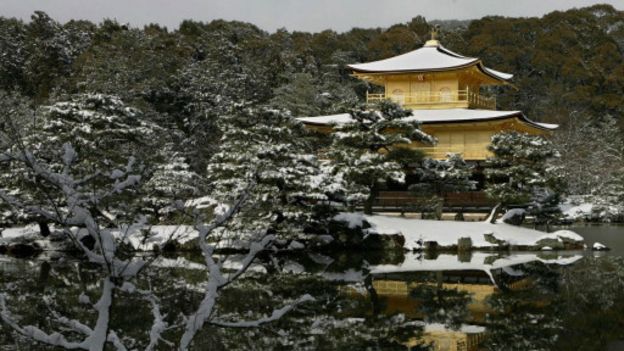
鹿苑寺和金阁寺AFP/Getty Images)
日本京都
成千上万的寺院、禅宗园林、神社,加上传统日式工艺品,让京都呈现出深深的历史印记。京都曾是大日本帝国的首都,标志性景点有东寺、鹿苑寺和金阁寺,它们透射出浓厚的民族意识,也被联合国教科文组织命名为世界文化遗产。京都被青山环绕,秋日里漫山红叶,小溪河水穿流其间,春日里则有粉色的樱花绽放,是一个平静安详之地,远离东京的忙碌节奏,吸引着那些渴望放慢生活节奏的人们。
不过,有着 140 万人口的京都也是一个不眠之城。市中心京都站附近的大街上熙熙攘攘,先斗町、祗园和木屋町等中心区域有众多的餐厅和夜生活去处。最受外国人欢迎的区域是东北部的冈崎(左京区)和市中心北部的岩仓、北山、下加茂和出町柳,它们的交通都十分便利。在上述区域,一个 20 平方米的一居室公寓月租约为 50,000-60,000 日元,而出町柳一个两到三居室的公寓月租约为 110,000 日元。上述区域三居室新建住宅的售价约为 300 万日元。那些希望少纳税、有更多空间的人会从京都东部搬到靠近琵琶湖附近的滋贺县。
Living in: Spiritual cities
By Sunshine Flint,22 December 2024
There are thousands of religions practiced around the world, from the ancient to the relatively new. Certain cities are closely linked to the faiths practiced by their residents, and have been imbued with a sense of the divine. Known for their religious histories, houses of worship and sacred spaces, these locales connect the faithful and attract visitors and devotees from around the globe.
Chiang Mai
Thailand’s second city is the former capital of the Lanna Kingdom that
once ruled the northern part of the country. It is home to hundreds of Buddhist
temples, including the famed Wat
Chedi Luang with its ruined chedi,
(or stupa, top) where visitors can bless Buddha by pulling a container of water
to the top of the temple with a rope and emptying it. At the 14th-century
Wat
Phra That Doi Suthep atop the Doi Suthep mountain just outside of town,
Buddhist monks bless the faithful as well as the curious, and temple workers advise
visitors on donating to the Buddha statue appropriate to their birth date. But
Chiang Mai is not a city preserved in amber: it is a vibrant metropolis packed
with locals, students, expats and retirees who fill the lively markets and
streets and the restaurants that line the Ping River.
The walled inner city is the core of ancient Chiang Mai, home to bars, cafes, temples and the crafts-filled Sunday Market; while the modern city, which surrounds the core, is where Chiang Mai University and other colleges are located as well as many apartment blocks. In the city suburbs, some expats live in moo baan, Western-style gated communities. “We have around 40,000 expats here,” said Pim Kemasingki, owner and publisher of Chiang Mai Citylife magazine. According to a recent Citylife survey, nearly a third of residents move to Chiang Mai for the culture and another 15% for the cost of living. In or near the inner city, monthly rents are around 5,500 to 8,000 Thai baht for a studio or share. Condos rent for around 20,000 to 31,000 baht, and a luxury property with four bedrooms and a pool in the modern part of town rents for around 56,000 baht per month.
Varanasi
Considered by Hindus and Jains
to be the holiest city in India, ancient Varanasi on the banks of the river
Ganges is the country’s spiritual capital. Also known as Benares, the city has
been in existence for approximately 3,000 years, making it one of the oldest
inhabited places on Earth. The many ghats (stone steps) leading down to the
sacred river are filled in the early mornings with bathers cleansing their sins
by immersing themselves in the water. The two funeral ghats where bodies are cremated are
so holy that the dead can achieve moksha,
when the cycle of reincarnation is broken and the soul goes straight to heaven.
Many festivals are celebrated throughout the year, such as Dev Diwali, held during November’s
full moon when the ghats and the river are lit with thousands of diya, or floating candles.
Varanasi has a population of 1.4 million, plus an annual influx of more than three million tourists and pilgrims. Neighbourhoods to the north of the city are quieter and greener than the areas closest to the river, such as the Cantonment area which was where the British lived and worked and is now home to international hotels and a hospital. Families also look in Sarnath, a village just outside Varanasi where Buddha first taught and where the Central University of Tibetan Studies is located. American colleges like Smith hold study-abroad programmes here and the Dalai Lama is sometimes in residence. A three-bedroom apartment in the city centre rents for 17,500 rupees and for 12,000 rupees outside of town. A 90sqm apartment in Sarnath sells for around 2.5 million rupees.
Jerusalem
This city is holy three times over, as the great monotheistic religions
of Judaism, Christianity and Islam all consider the Old City of incredible religious
importance. Home to the Temple Mount, which includes the Western Wall (the only surviving part of
the Second Temple), the al-Aqsa
Mosque (the third holiest site in Islam) and the Dome of the Rock (the Muslim shrine
that houses the Foundation Stone), as well as the Church
of the Holy Sepulchre that stands on the site where Jesus was crucified,
this tiny parcel of land, less than 1sqkm, contains some of the holiest spots
on Earth. Devotees come from all over the world to pray and follow in the
footsteps of King David or to retrace Jesus’ path to crucifixion. The current
city, of which the Old City is a part, is divided into West Jerusalem, mostly
Israeli, and East Jerusalem, heavily Palestinian and Arab. There are
significant differences in services and standard of living between the two
sides, as well as the separation barrier that is currently cutting off parts of
East Jerusalem from the rest of the city and the West Bank.
For those moving to Jerusalem, one of the biggest decisions to make is whether to live in the east or west part of town. Some expats who work for NGOs or charitable organisations might have their decisions made for them depending on what type of work they are doing and where. In West Jerusalem, the German Colony is one of the most popular areas to live, with boutiques, cafes and restaurants lining Emek Refaim, the high street. Nearby, the Baka neighbourhood is very desirable due to its traditional Arab houses and architecture. In East Jerusalem, the Shuafat district has excellent transport links, containing three stations of the Jerusalem Light Rail that runs from east to west through the city. A three-bedroom apartment in areas such as German Town and Baka rent for 5,000 shekels a month, while a two-bedroom in German Town starts at 1.5 million shekels to buy.
Salt Lake City
The state capital of Utah and spiritual home to the world’s Mormon
population, Salt Lake City was founded in 1847 by Brigham Young and other leaders
of the Church
of Jesus Christ of Latter-day Saints. The many-spired Salt Lake Temple sits on
the 10-acre Temple Square, which is also home to the famous Mormon Tabernacle
Choir, and the Family
History Library, which contains the world’s largest cache of genealogical
material.
About half of the city’s population is Mormon and membership in the church is one of the fastest growing in the world, due to its missionaries proselytising and the high birth rate in Mormon families. But Salt Lake City is also home to a diverse population of followers of other religions, gays and lesbians and outdoorsy types. The city hosted the 2002 Winter Olympics, and is within minutes of the Wasatch Range with its four ski resorts, and just half an hour from the Park City and Deer Valley ski resorts. “People move here because of the Mormon headquarters and retirees move here because they want to be close to church and family,” said David Anderton, director of communications for the Salt Lake Board of Realtors. “Not to mention the quality of life, access to five national parks and ski resorts.”
The downtown core got a boost with the 2012 opening of the City Creek Center, a shopping mall and mixed-use development of rentals and condos across the street from the Salt Lake Temple, financed by the Church of Jesus Christ of Latter-day Saints. The most desirable downtown neighbourhoods are in the foothills of the Wasatch Range, such as The Avenues, Oak Hills and Sugar House. Much of the housing stock is Victorian and turn-of-the-century beauties on shady tree-lined blocks, and houses here can cost more than $500,000. To the south, houses in the lower-priced areas of Taylorsville and Kearns start at around $150,000, while rent is $900 to $1,000 a month. The in-demand suburbs of Draper and Sandy are about 20 miles south of Salt Lake City and single-family homes cost around $450,000, while a two to three-bedroom rental starts at $1,200.
Kyoto
With thousands of temples, zen gardens, Shinto shrines and traditional
Japanese arts and crafts, the past is still deeply present in Kyoto. Once the
capital of imperial Japan, iconic spots such as the To-ji Temple, Kinkaku-ji
Temple and the Golden Pavilion, are deep in the national consciousness and are
also Unesco World Heritage sites. Surrounded by green hills with trees that
turn crimson in the autumn months and crossed by rivers and canals lined with
pink cherry blossoms in spring, Kyoto has a tranquillity and peacefulness far
removed from the hectic pace of Tokyo, drawing those looking for a change of
pace.
Still, the city of 1.4 million is no sleepy village. The streets around Kyoto Station in the city centre are bustling, and the central areas of Pontocho, Gion and Kiyamachi are where many of the restaurants and nightlife are to be found. The most popular expat neighbourhoods are Okazaki (Sakyo-ku) in the northeast, Iwakura, Kitayama, Shimogamo and the Demachiyanagi north of the centre, all with good transport links. Small 20sqm one-bedroom flats rent for around 50,000 to 60,000 yen a month in these neighbourhoods, while a two- to three-bed apartment in Demachiyanagi goes for around 110,000 yen a month. A three bedroom property in a new building in the same neighbourhood sells for around 30,000,000 yen. Those looking for lower taxes and more space move east of Kyoto to the Shiga prefecture near Lake Biwa.